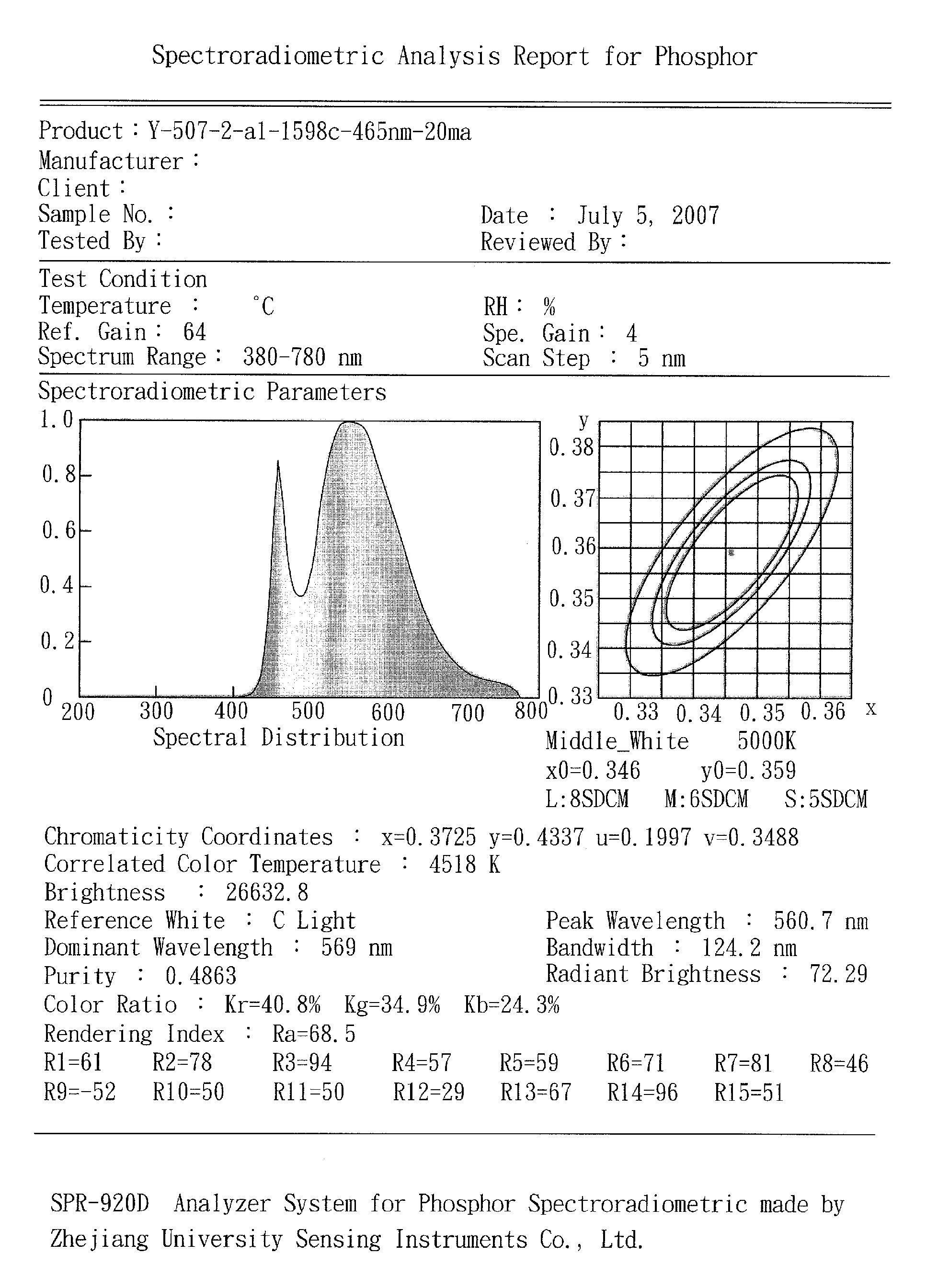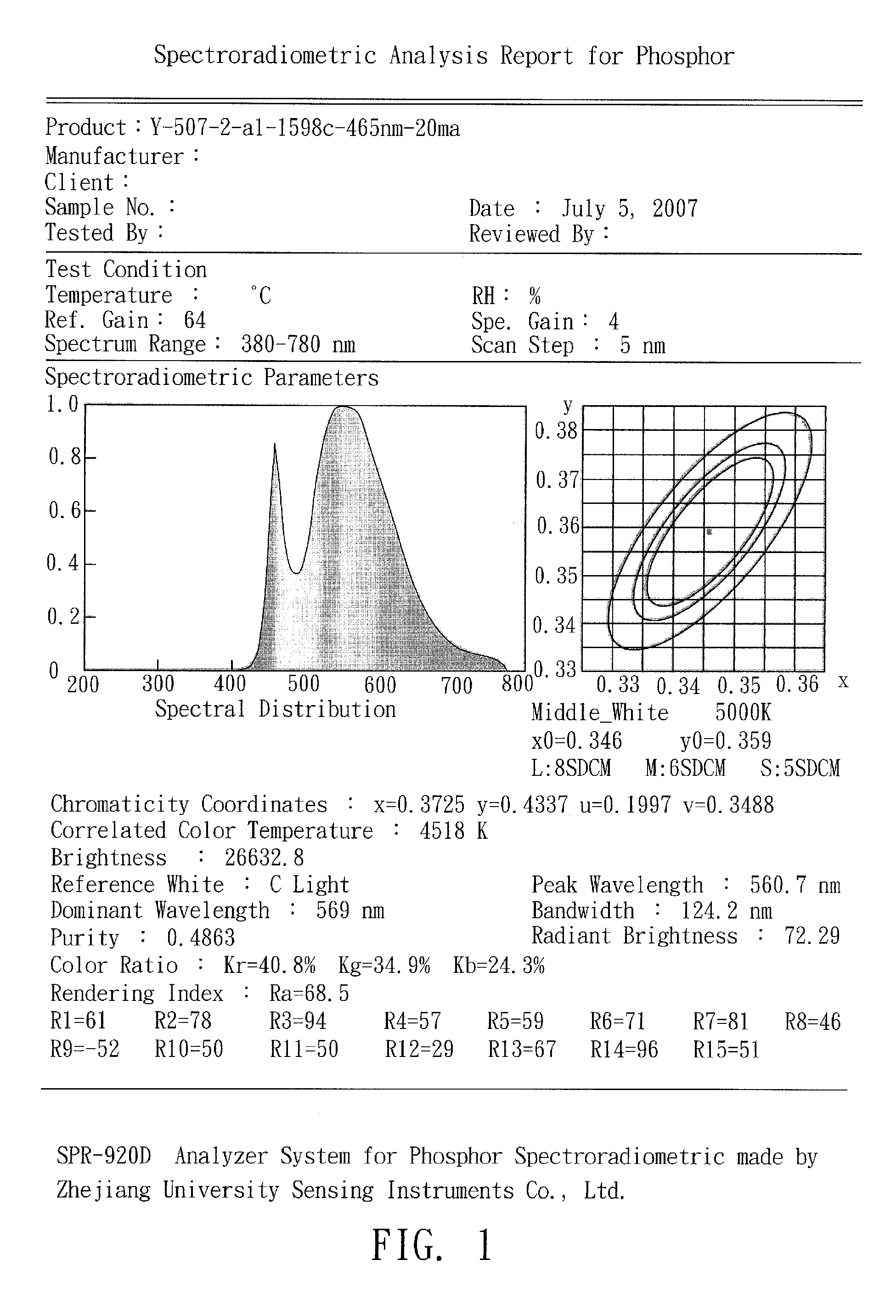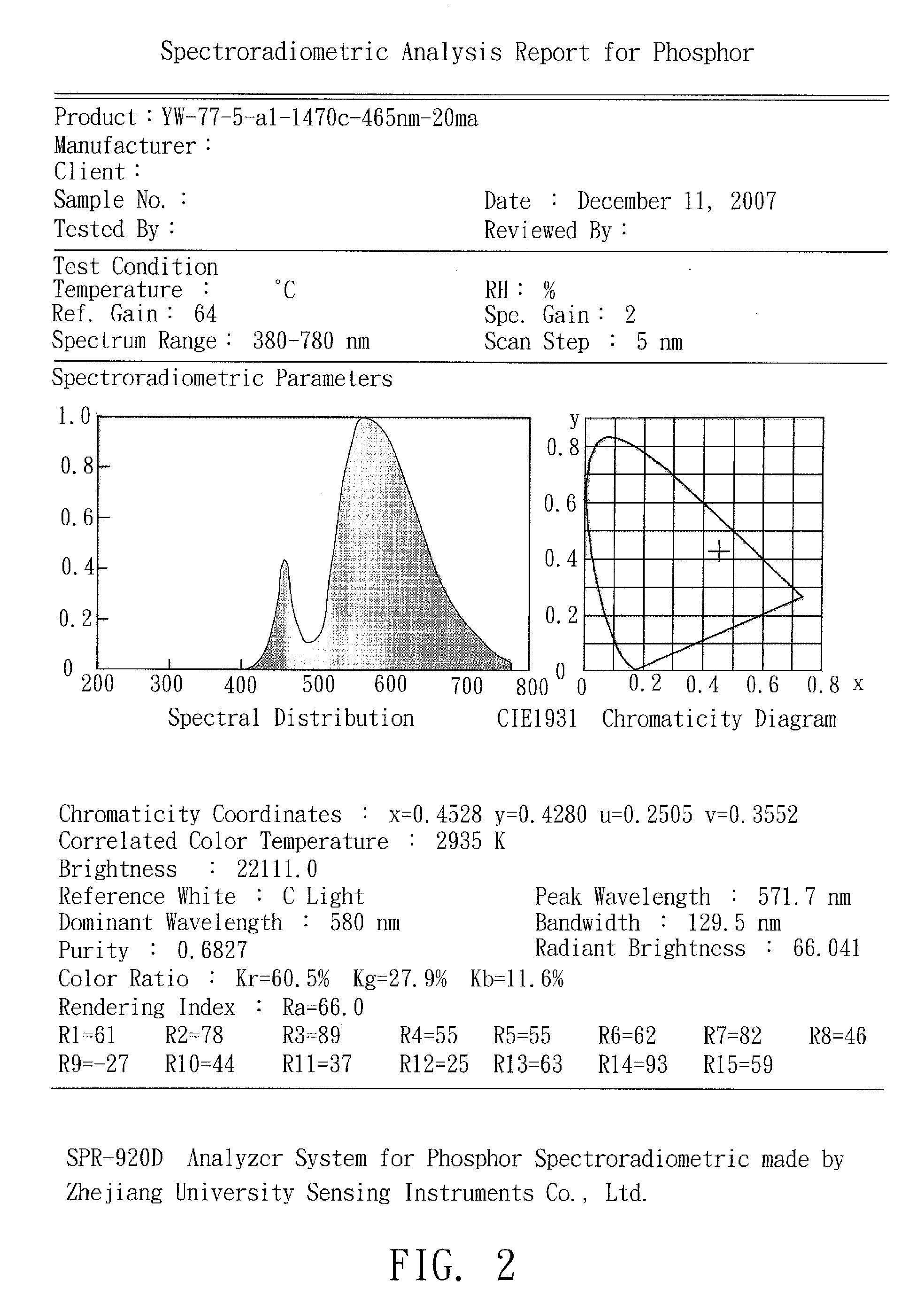Warm-white light-emitting diode and its orange phosphor powder
a light-emitting diode and orange phosphor powder technology, applied in the field of microelectronics and lighting technology, can solve the problems of low efficiency of first generation leds, low efficiency of phosphor powder, and inability to meet the needs of lighting, and achieve the effect of stable warm-white radiation
- Summary
- Abstract
- Description
- Claims
- Application Information
AI Technical Summary
Benefits of technology
Problems solved by technology
Method used
Image
Examples
Embodiment Construction
[0026]First of all, the general object of the present invention is to eliminate the aforementioned drawbacks of the phosphor powder and the warm-white LEDs using the phosphor powder. To achieve the object, an orange-yellow phosphor powder according to the present invention is rare-earth aluminate having the garnet structure, which is characterized by that its chemical composition is added with compounds of the IV and V groups elements and the stoichiometry formula of the orange-yellow phosphor powder is (ΣLn)3−xMeIVxAl5−ySiyO12−(x+y)Nx+y, wherein Ln=Y, Gd, Ce, Lu, and Tb; MeIV=Zr and / or Hf; and its stoichiometry indexes are 0.001≦x≦0.1 and 0.001≦y≦0.1; and wherein the phosphor powder luminesces in the orange-yellow region of the spectrum, ranging from 490˜770 nm, with a maximum wavelength of λmax≧570 nm and half bandwidth larger than 120 nm.
[0027]The condition for the formation of the rare-earth cationic sub-crystal in the phosphor powder is as follows:
ΣLu=mY+nGd+pCe+qLu+lTb,
wherein...
PUM
| Property | Measurement | Unit |
|---|---|---|
| half band width | aaaaa | aaaaa |
| maximum wavelength | aaaaa | aaaaa |
| thickness | aaaaa | aaaaa |
Abstract
Description
Claims
Application Information
 Login to View More
Login to View More - R&D
- Intellectual Property
- Life Sciences
- Materials
- Tech Scout
- Unparalleled Data Quality
- Higher Quality Content
- 60% Fewer Hallucinations
Browse by: Latest US Patents, China's latest patents, Technical Efficacy Thesaurus, Application Domain, Technology Topic, Popular Technical Reports.
© 2025 PatSnap. All rights reserved.Legal|Privacy policy|Modern Slavery Act Transparency Statement|Sitemap|About US| Contact US: help@patsnap.com



